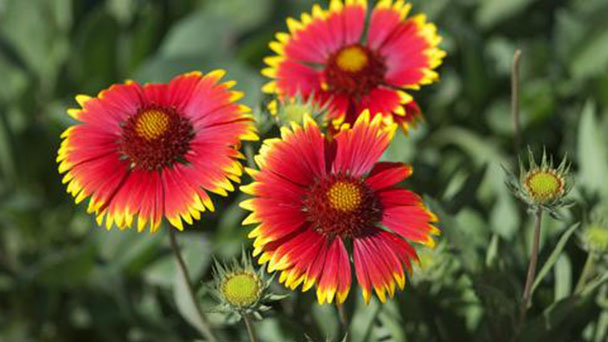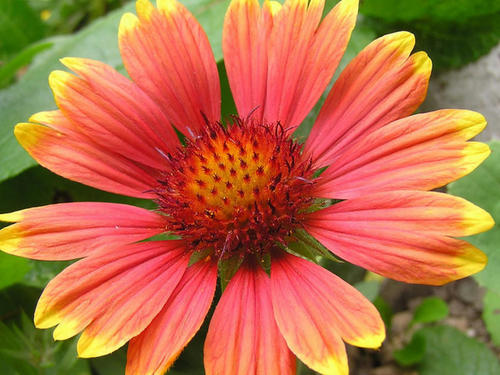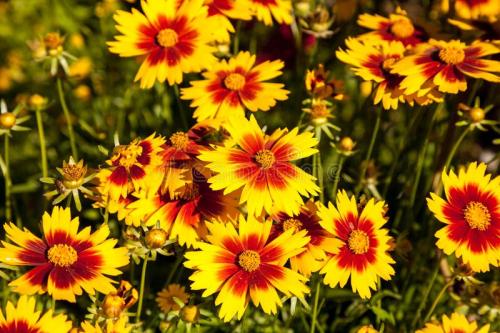How to grow and care for Indian blanket (Gaillardia Pulchella)
Written by Maggie
Dec 13 2022

Indian blanket is resistant to drought and heat. It likes heat, but not cold. Indian blanket likes light, can also endure half shade. Indian blankets require good drainage. Fertilizer is needed when we grow and care for Indian blankets.
1. Temperature Care for Growing Indian Blanket
This Daisy-Like Flower is a kind of high-temperature loving plant, so 20 to 30 degrees is more appropriate. It is relatively heat resistant, but not very cold resistant.These habits are easily discernible by their range of distribution. So, when we grow and care for Indian blanket, we need not adjust generally in summer, but arriving in the winter has to prevent cold.
2. Light Care for Growing Indian Blanket
It likes the sun very much. It can tolerate half shade, but not complete shade. Except for summer, all seasons have full sunshine. Even in summer, it can not be too dark, can be placed in a semi-shady place, or only avoid direct light, other times to receive sunshine.
3. Watering Care for Growing Indian Blanket
Indian blanket likes wet. When the growth rate is fast, it is usually watered once a day or two. When we grow and care for Indian blanket in the summer, water is usually once a day, or once in the morning and once in the evening. Winter is not so frequent, but not a little supplement, generally once a week can be.
4. Fertilization Care for Growing Indian Blanket
When we grow and care for Indian blanket, fertilize once a week, because it likes fertilizer. However, fertilization can be suspended in winter.
5. Pruning Care for Growing Indian Blanket
When we grow and care for Indian blankets in the spring, it is best to pick the heart, so that more branches after the flowering is more. Then dry and senile branches and leaves, cut off in time. For the pruning of flowers, mainly after flowering.

Indian Blanket Propagation Methods
Indian blanket is available for seeding method. Summer sowing can be more common. After selecting the substrate, to disinfect, the most common way is high temperature disinfection, which will make the worm eggs laugh to death. Then, the seeds need to be soaked for three to ten hours before sowing. Use a tool such as a toothpick to stick the seeds up and plant them. After sowing, use the "soak pot method" to replenish water. The depth of water can be one half to one third of the depth of the pot, and the temperature is about 20 degrees.
Indian Blanket Disease and Pests Control
Disease: "powdery mildew" is relatively common, especially in summer and autumn, the degree of damage to leaves and flowers is very serious. It can be treated with chlorothalonil. Then it is "rust", fungus brings about, usable chlorothalonil.
Insect pests: "aphids", "snails" are common, the former can spray, the latter can be captured artificially.
Indian Blanket Toxicity
toxicity is not toxic, no harm to people. What's more, it can absorb harmful substances.

Latest Updated
- Benefits of Bugleweed - 7 Science-backed Health Benefits
- Bugleweed Dangers & Side Effects - Is It Poisonous?
- How to Plant Evergreen Trees - What You Should Know
- When to Plant Evergreens - Grow Guide for Evergreen Trees
- 12 Wonderful Evergreen Shrubs for Your Garden
- 12 Popular Evergreen Plants with Pictures for Beginners
- When And How To Prune A Lilac Bush Like a Pro
- How to Grow & Care for Lilac Vine (Hardenbergia Violacea)
- Japanese Lilac Tree (Syringa Reticulata) Care & Propagation Guide
- Shumard Oak Pros and Cons - What to Know
Popular Articles
- Winter maintenance of Antirrhinum Majus
- How to Grow Terminalia Mantaly Tree
- How to Grow and Care for Crossostephium Chinense
- How to grow Antirrhinum Majus in spring
- Peristeria Elata (Dove Orchid) Profile: Info & Care Guide
- Underwatered Snake Plant (Sansevieria Trifasciata) - Signs And How To Fix
- How to Care for Brazilian Jasmine Plant (Mandevilla Sanderi)
- How to Grow & Care for Graptopetalum Purple Delight in Summer
- Rosa Chinensis (China Rose): Plant Growing & Care Tips
- How to Care for Baby Sun Rose (Aptenia Cordifolia)